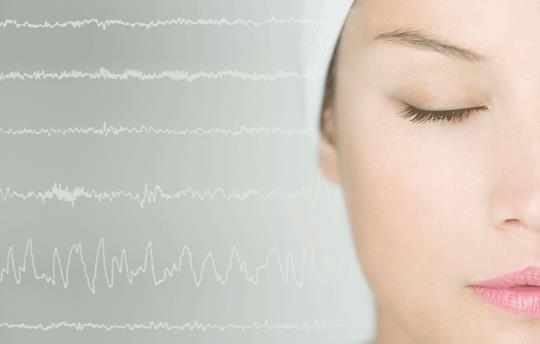Can Emotional Testing Be Valuable to a Usability Study?
1/26/2017 Ray Kowalewski

When a consumer interacts with your brand, it can be extremely tough to tell how they are feeling. Which is a shame, because understanding customer emotions in response to your products and services — no matter the medium — can help refine and improve the overall customer experience … and increase conversions.
A CEI Survey revealed 86% of buyers will pay more for better CX. Surprisingly, only 1% of customers feel that vendors consistently meet their expectations. Talk about under-delivering.
What is your brand doing to provide a better customer experience? Are those efforts delivering on an emotional front?
How to Measure Emotion in Customer Experience
You might be asking yourself how to measure emotion in customer experience. One way to find that out is through emotional testing. Identifying customer emotions can accurately help tell an often untold user story that includes a number of did-you-knows:
- Functional experiences are perceived as more enjoyable.
- Frustrated users have a tendency to (quickly) lose trust in the site or application being used.
- Spikes in any emotion — positive or negative — increases memorability.
- Excited or engaged users are more likely to explore promotions or other offers.
- User likeliness to convert holds a direct correlation to engagement.
Our research and customer experience experts use a noninvasive, 16-node wireless electroencephalography (EEG) headset as the primary way to measure emotion in users during a usability study. This device records electrical activity along the scalp in real-time, gathering information on facial expressions, nonverbal reactions, and different emotions to present a powerful emotional picture of user reactions.
So Why Use EEG?
To reveal underlying human behavior, we turn to EEG technology for the following reasons:
- Delivers real-time processing. Tens to hundreds of milliseconds — that’s how fast most cognitive processes occur.
- Offers subtle detection. Brain activity is relentless — and many of its extremely subtle signals run along the scalp surface.
- Provides a level of convenience. Through noninvasive design, the wireless and lightweight EEG headset lends itself to flexible data collection.
EEG Output We Keep an Eye On
When analyzing the emotional reaction of a customer to an experience, we pay close attention to these three key EEG metrics:
- Excitement Short Term (EST). This metric tracks changes in excitement over short time periods such as several seconds — both good (e.g., excitement, titillation) and bad forms (e.g., agitation) of excitement.
- Engagement. This metric is experienced as alertness and conscious attention on tasks.
- Frustration. This metric is related to task failure, loss of control, and confusion. Its experience is often correlated with anger.
Useful Insights Revealed By an Emotional Testing Study
In a recent study, we looked at the emotional responses users had while performing several tasks (e.g., watching TV ads and shopping online). Below are a few of the lessons we’ve learned from emotional testing with EEG technology.
1. When Verbal Responses and Emotional Reactions Don’t Match
On several occasions with study participants, customer emotions actually experienced did not match the customer’s verbal responses or facial expressions.
For example, users would state they were having a positive experience while shopping when, in fact, they were frustrated by the offerings displayed or how filters functioned. EEG reporting afforded up the opportunity to follow up with participants to get at their true thoughts and feelings.
2. Prior Events Impact the Perception of New Experiences
In one task, study participants watched a car ad immediately after watching videos that elicited either positive or negative emotions. The car ad begins with slow tempo music accompanied by slow camera cuts showing off the exterior and interior of the car. Then the music and camera cuts abruptly speed up part way through the ad.
Users’ emotional responses to the ad differed depending on what they had watched immediately prior to the ad. After watching a positive lead-up video, users tended to react positively to the change in tempo with increases in engagement and excitement.
After a negative video, however, users tended to react negatively to the change in tempo with a rise in frustration and drop in engagement. Users also tended to be more favorable about the ad and recall more details from it after the positive video than after the negative video.
3. Shopping Can Be a Roller Coaster of Emotions
Users showed an immediate bump in excitement and engagement when they were given the task to shop online for a pair of shorts. Customer engagement tended to rise — or stay steady if already high — during the shopping experience as long as the user felt like they were making steady, uninterrupted progress.
Additionally, users had bumps in excitement during these three stages of the shopping process:
- Initiating their search for a specific product type
- Taking a first look at search results
- Successfully using filters to hone in on a favorable product
On the other hand, users became frustrated and less engaged when:
- Search results did not turn up anything interesting
- Search filters were not performing effectively
- Error notifications were encountered during the shopping experience
- Pop-up notifications appeared for external sites
When Will You Get in Touch With Customer Emotions?
Real talk: The inclusion of emotional testing (with EEG) can better inform your traditional usability and eye tracking studies. The data from EEG reporting provides a deeper understanding — in real time — of the customer experience without relying on self-reporting or after-task interviews.
Additional study benefits our clients have realized after studying customer emotions include:
- Better conversion rates on critical CTAs
- Reduced abandonment
- Higher comprehension
- Improved brand awareness and information recall
Ray Kowalewski is research and customer experience manager for RRD Marketing Solutions.
If you’re interested in building a business case to deploy an emotional testing study, connect with one of our usability experts about emotional testing technology. Contact us today.